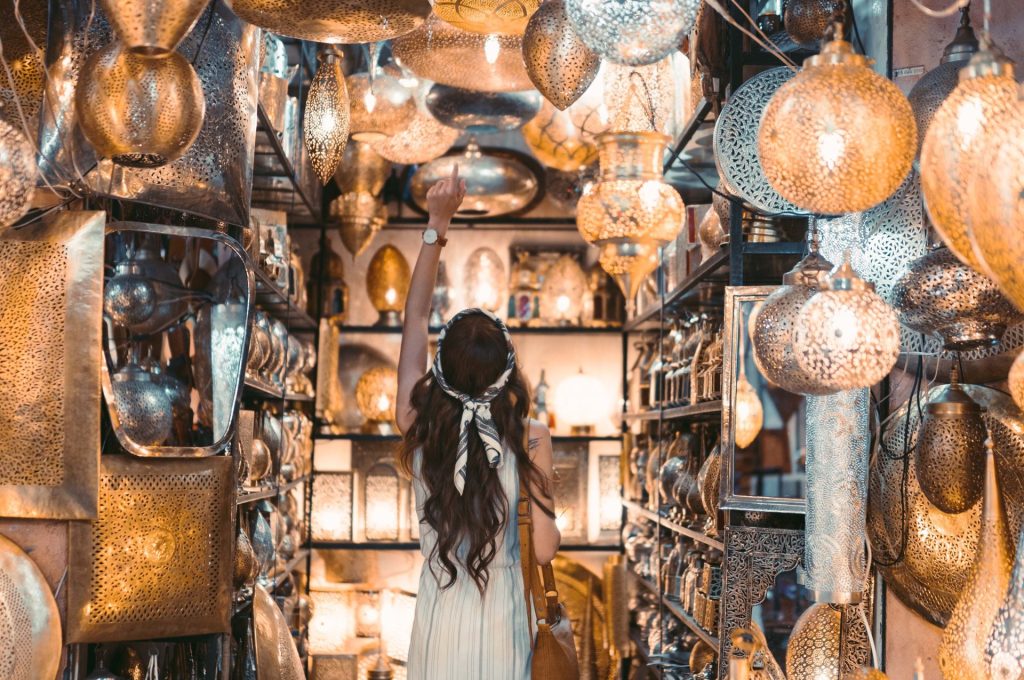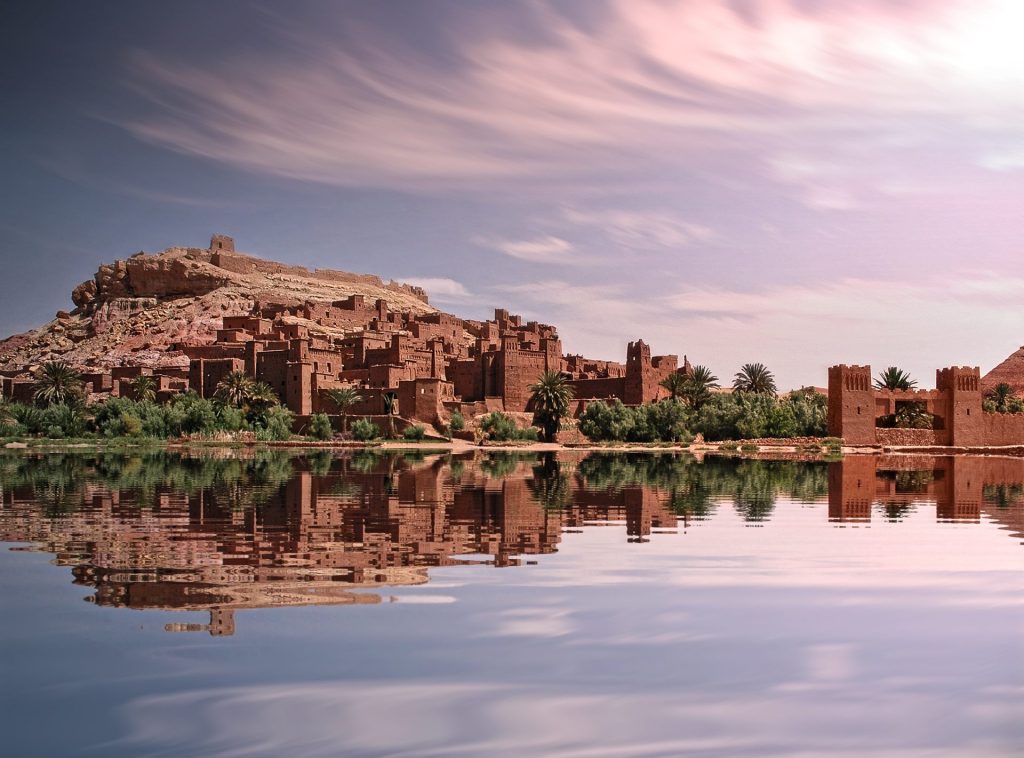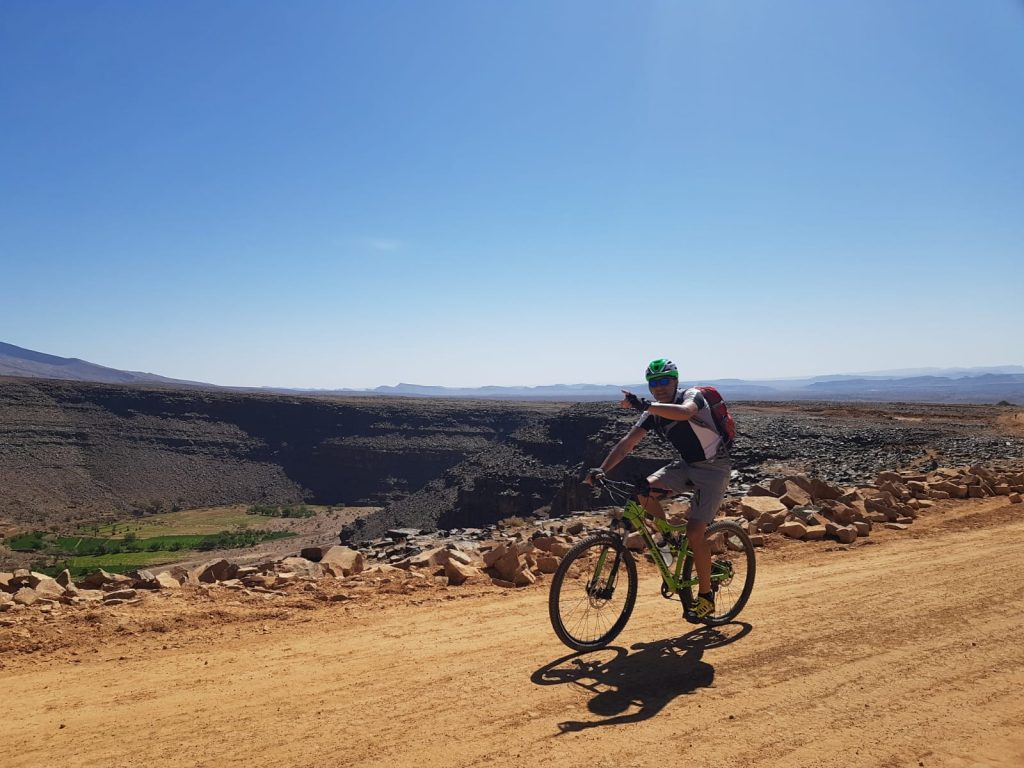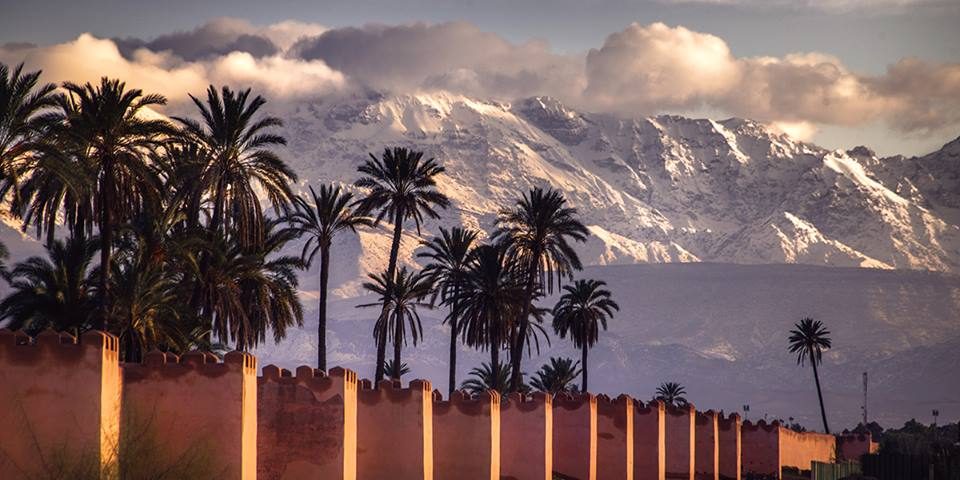Morocco Bicycle Tour: An Epic Adventure from Marrakech to the Atlas Mountains
You need a passport to travel to Morocco, but to uncover its true soul and beauty, an adventurous spirit and a love for cycling are essential. If you’re in search of a one-of-a-kind and immersive experience, the concept of exploring Morocco on an E-bike or MTB might just catch your interest. Allowing your curiosity to guide you, you can set out on an unforgettable journey from Marrakech to the Atlas Mountains, through stunning landscapes and ancient cities that narrate a history of millennia.
Departure from Marrakech: The Red City
The vibrant city of Marrakech, with its streets filled with enveloping colors and sounds, serves as the perfect starting point. A question that many travellers might have is: How safe is Marrakech? Marrakech is generally considered a safe tourist destination, but as always, it’s advisable to conduct updated research on the current situation before departing. Marrakech is the most significant of Morocco’s imperial cities. Founded as far back as 1062, it’s a vivid mosaic of history, culture, and contemporary life. A must-visit is the Marrakech Medina. Within its narrow alleys, you’ll discover artisan workshops crafting intricately decorated ceramics, handwoven carpets, unique art pieces, and the traditional markets, known as souks. Every corner holds a chance for wonder, with grandly carved doors, gracefully adorned fountains and historic palaces that tell tales of times gone by.

Marrakesh: by Taryn Elliott
At the heart of the medina, you’ll find the famous Jemaa el-Fnaa Square: during the day, it’s a vibrant open-air market bustling with street vendors, musicians, and snake charmers. When evening falls, the square comes alive with traditional food stalls where you can enjoy the performances put on by street artists.
And after a day of exploration, retreating to a Riad becomes a relaxing and captivating experience. These traditional structures, often hidden behind unassuming doors, reveal enchanting inner courtyards adorned with colorful tiles and intricate architectural details. Here, you can truly soak in the tranquillity and authenticity of Moroccan life.
Ait Ben Haddou and Ouarzazate: Cinematic Gems and Ancient History Setting
Your journey will take you through Ait Ben Haddou, an ancient fortified city that seems to have come straight out of a fairy tale. This UNESCO World Heritage site has served as the backdrop for numerous famous films like Alexander, Gladiator, The Jewel of the Nile, and many others, due to its unique atmosphere and winding alleyways. From here, you’ll pedal towards Ouarzazate, known as the “Gateway to the Desert.” In the past, this town functioned as a post station for caravans en route to Timbuktu and was later expanded by the French in the 1920s as a strategic point. The film industry has also played a significant role here, serving as a cinematic setting in the 1950s.
From the Draa Valley to Agdz and N’Kob: Amidst Deserts and Oases
Continuing through Ouarzazate, you’ll reach the Draa Valley, a region crossed by the Draa River originating in the High Atlas and flowing southwards through Morocco, eventually merging into the Sahara Desert in Algeria. Along its course, the Draa River creates a fertile oasis surrounded by palm groves and water springs, presenting a captivating contrast with the surrounding desert scenery. E-bikes will enable you to explore these remote places sustainably, enjoying the diversity of colors and forms that the desert offers.

Ouarzazate_ by Moussa Idrissi
This region is renowned for its kasbahs, which are ancient mud and clay brick fortresses. These kasbahs were constructed centuries ago as dwellings and defences against harsh weather conditions and enemy raids. Furthermore, the Draa Valley is famed as a stop along the ancient trans-Saharan trade route that connected sub-Saharan Africa with the North African and Middle Eastern regions. This trade route was crucial for transporting goods like gold, spices, and fabrics, playing a significant role in the history of the area. Local communities still gather today for trade at the numerous Souks in the area.
This journey through the Draa Valley leads to Agdz, a small town situated along the main road that traverses the valley. Agdz provides an opportunity to immerse oneself in Berber culture, deeply rooted in this region, and is an ideal destination for those seeking an authentic Moroccan experience away from the tourist crowds.
About 100 km from Agdz, another noteworthy gem is the village of N’Kob. N’Kob is generally considered a smaller and quieter village compared to Agdz. This more compact size can offer an even more authentic and rural atmosphere, providing a more intimate experience of local daily life.
Crossing the Jebel Saghro and Exploring Tinghir
From N’Kob, following a track that ascends over 2,000 meters in altitude, you can reach Bab n’Ali (Ali’s Gate). “Bab n’Ali” is a mountain pass located in the Jebel Saghro mountain range in southern Morocco. This pass offers a panoramic view of the surrounding mountains. Jebel Saghro is a mountain range characterized by desert and rocky landscapes, featuring volcanic formations and eruptive rocks that bear witness to its volcanic origin. The mountain range hosts dormant volcanoes, volcanic cones, craters, and other features typical of volcanic areas.
After crossing the Jebel Saghro, you can reach Tinerhir, also known as Tinherir. It’s a city located in the Berber region of Drâa-Tafilalet, renowned for its strategic location at the base of the impressive Todra Gorges. Tinerhir is surrounded by oases and palm groves, where date palms thrive thanks to the water from the Todra River. These landscapes provide a captivating contrast with the surrounding desert terrain and are often traversed by traditional irrigation channels. The city is famous for its goldsmith workshops, fortified buildings, and its partially ruined palace.
Todra and Dades: Challenges and Rewards
The Todra Gorges are situated near the town of Tinghir. These narrow canyons have been carved by the Todra River through the surrounding mountains, forming rock walls that rise over 300 meters in some places. The gorges are famous for their sheer and sculpted walls, creating a spectacular passage through which the river flows. The Todra Gorges offer a sense of grandeur and a surreal atmosphere, especially during the morning and at sunset, when the sunlight casts intricate plays of shadows and light on the rock walls.
Moving on from the Todra Gorges, the route leads to Agoudal, a village nestled in the Eastern High Atlas of Morocco. It sits at an altitude of around 2,300 meters above sea level, making it one of the highest villages in the region. Thanks to its elevation, Agoudal enjoys a relatively cool climate, offering a refreshing escape from the warmer temperatures of lower regions, particularly during the summer.
Agoudal is surrounded by spectacular mountain landscapes of the High Atlas. Visitors can admire towering peaks, verdant valleys, alpine meadows, and breathtaking panoramic views. The population is mostly Berber, and due to its remote location and absence of light pollution, Agoudal is an excellent spot for stargazing and admiring the night sky.
The Dades Gorges, also known as the “Dades River Gorges,” are located in the same region as the Todra Gorges. These gorges are equally stunning and have been carved by the Dades River through the surrounding mountains. Here too, the rock walls rise vertically, creating a breathtaking environment. The Dades Gorges offer majestic landscapes and expansive panoramic views.

The Todra Gorges and the Dades Gorges share some similarities, yet they also hold distinctive differences. The Todra Gorges are often narrower and deeper, creating an atmosphere of incredible grandeur. On the other hand, the Dades Gorges offer broader landscapes and open spaces.
Agoudal and Dades are captivating but challenging stops from a cycling perspective. However, each ascent will be rewarded with breathtaking vistas and a sense of achievement. Here, the use of E-bikes proves particularly valuable in tackling the challenges of high altitudes, allowing you to fully enjoy the surrounding environment without enduring excessive physical strain.
Back to Marrakech via the Route of the 1000 Kasbahs
With the plan to head back to Marrakech, at this point of the journey, you can venture along the “Route of the 1000 Kasbahs.” Also known as the “Route des Mille Kasbahs,” this is a captivating and scenic route. One of the common starting points for the “Route of the 1000 Kasbahs” is the town of Skoura. This locale is renowned for its numerous well-preserved kasbahs and lush palm groves. In Skoura, you can admire the Amridil Kasbah.
It’s believed that the Amridil Kasbah was constructed in the 17th century by the Glaoui family, a powerful clan of tribal leaders and warlords. The kasbah served as a residence for the Glaoui family and as a strategic control point along the trade caravan route. Despite its age, the Amridil Kasbah is well-preserved thanks to restoration efforts. Over the years, this kasbah has been renovated and maintained to uphold its original appearance and structure.
In summary, the E-bike adventure from Marrakech to the Atlas Mountains offers an extraordinary opportunity to explore Morocco authentically, uncovering its history, culture, and unique landscapes. Whether you’re a seasoned cyclist or seeking a challenge, this journey will provide unforgettable rewards and the joy of discovering the hidden wonders of this captivating nation, not as a tourist but as an explorer.



